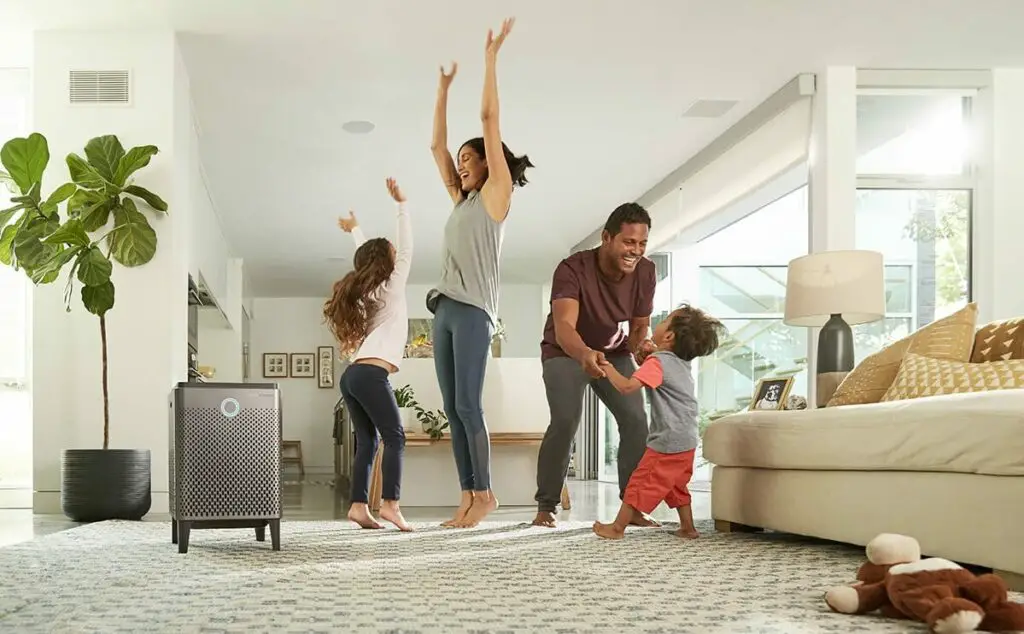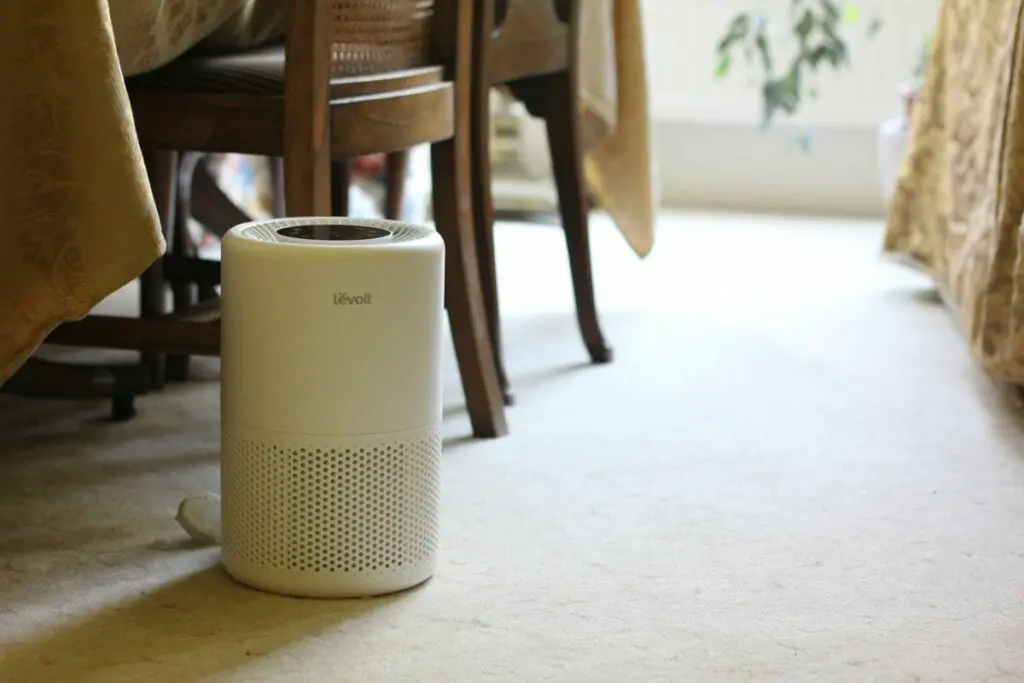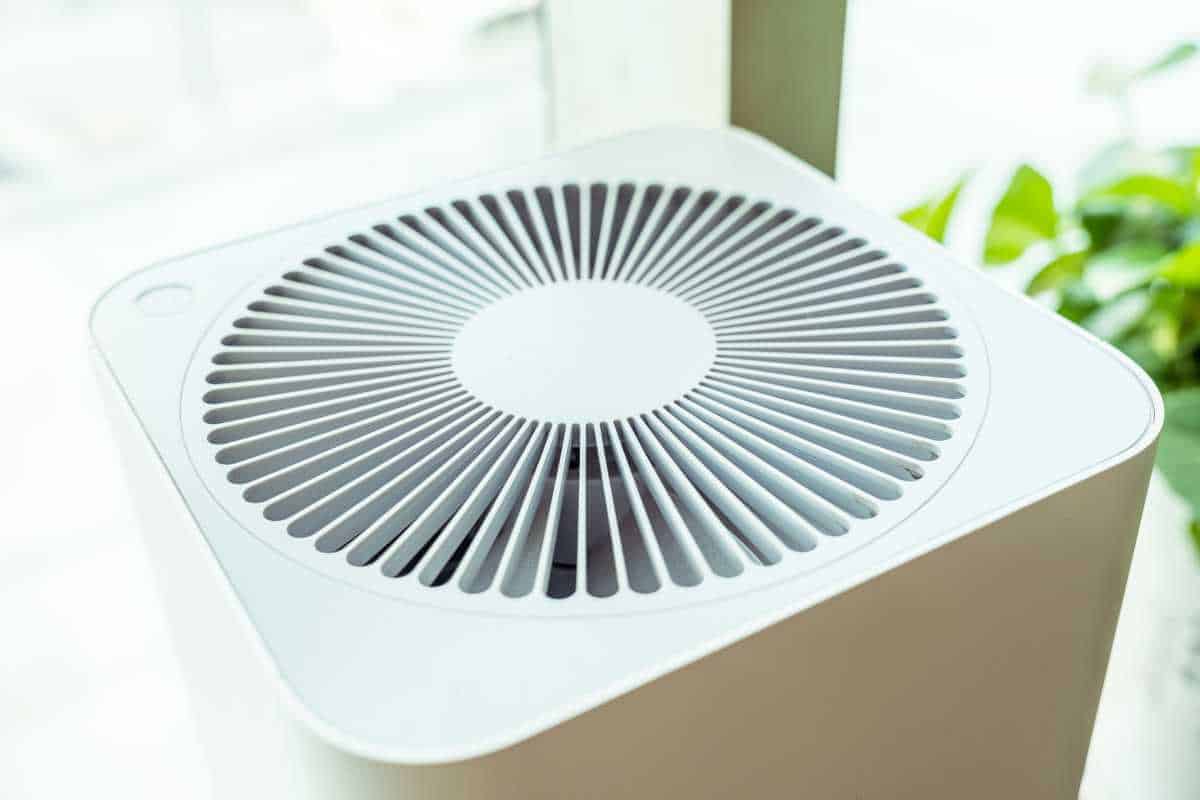There is some evidence that removing particles from the air leads to better academic performance. This evidence is fairly persuasive, but not beyond doubt, but what is beyond doubt is that the development of dementia is linked to particle pollution. Indeed, ultrafine particles have been found in the brains of people at postmortem. They are also linked to many health problems in later life. Even in the age group of college students a higher particle count in the air has been linked to more psychiatric problems, particularly depression. So it is probably best to breathe the cleanest air possible.
They also reduce the chance of being infected with viruses from friends visiting your dorm room.
We need to get away from thinking of air pollution significant enough to affect health as only being in certain areas; it is now almost everywhere. 98% of areas in the US, for which there was EPA data now have fine airborne particle levels above the WHO safe level. So people in 98% of the US could potentially benefit from air purifiers. Nor are agricultural areas immune from air pollution, agricultural production itself produces air pollution.
Although your dorm may have an air conditioner or HVAC system, it will not improve air quality enough to improve health, as the filters are relatively poor. The filters in an air conditioner are designed to protect the machine itself, not the humans it serves! Air purification is very demanding and only a true HEPA air purifier will adequately improve your indoor air quality.
So it is natural that a young adult setting out for a period of study, especially if in an urban setting, should wish to consider an air purifier. At the cheapest end of the spectrum, they start at $80. But should you buy the cheapest and how do you choose the best fit for what you want?
Overall the best air purifier for a dorm is the Coway 300S or Coway 400S. They are powerful but quiet and so will not disturb you or a room mate when you are studying. They are also smart so that you can set the time that it will come on and turn off.
However, there are many more you could consider. Here are a few criteria for making a good choice –
- The air purifier should be quiet. You do not want to be disturbed when you are working and you do not want a roommate complaining about the noise the air cleaner makes if you share a flat.
- Excellent ultrafine particle filtration specified down to very small particle size by a trusted manufacturer
- Good volatile organic compound removal-if odor removal is a problem. Leaving the window open periodically is also important.
- Smart air purifier-you have enough to think about so the air purifier should be smart. You can then set it to automatically come on when you are in the room and go off when you are out of it. You will not have to remember to switch it on and off.
- Not too large-its physical dimensions must be such that it does not dominate the room.
- Not need much maintenance-lets face it, you have got other things to do!
- Last for a long time-so you can take it with you to your first home so the upfront cost is worth it
[Table of winning and losing points
Be Careful When Buying
You should buy an air purifier with a true HEPA filter ideally H13 or above. Air cleaners without filters may not give adequate particle reduction for beneficial health effects. Then the next thing to check is that there is an adequate amount of air processed by the air purifier each hour to clean the air in your room sufficiently, and that the air purifier will not be too noisy at this airflow setting. Please see this article for further details on buying an air purifier.
You do not need ionic air purifiers and UV light if your air purifier has a good HEPA filter. A HEPA filter will reduce all manner of particles such as dust mite, pollen, pet dander and other allergens.
Manufacturers, of course present their air cleaners in the best possible light. So some manufacturer’s gloss over aspects of their machines that if you knew about them, you would probably not buy them. This applies right up to the $800 range.
Another very common problem is that the room sizes quoted on the internet are often not accurate and sometimes wildly misleading. You need the clean air delivery rate(CADR), at an air flow rate you can tolerate the noise of. If you multiply the CADR times 1.5, this will give you the size of room that the air purifier will serve, assuming your ceilings are not greater than 8 feet tall.
Most manufacturers do not give you the air flow and noise data on each setting. So you may buy an air purifier which is fine for purifying the air on its highest airflow, but find that you cannot tolerate the noise on the highest airflow. Then when you switch it down, you find that it is not powerful enough to purify the air properly as the airflow is too low for your room size.
The safest thing is to select from choices on this website, as other websites tend not to give this data either. Then you can work out if the air purifier will adequately purify the air in your room.
Noise is Usually a Priority in a Dorm
To keep the noise as low as possible, you need a fairly large air purifier. The reason for this is that the smaller the air purifier, the faster the air needs to go through it to serve a particular space. The higher the velocity of air rushing through the body of an air purifier and the filter, the louder the noise.
Also, much like a violin makes a higher pitch noise than a cello, so a small air purifier makes a higher pitch noise than a large air purifier. High pitched whiny noises are more irritating than lower pitched noises.
So for both reasons, if noise is a priority I would suggest the Coway 400S or 300S.
If Odor Removal is a Priority
The other airborne pollutants that we need to remove are volatile organic compounds (VOCs). These are organic chemicals which evaporate into the atmosphere, they enter our noses and bind to smell receptors, which give us the sensation of an odor. So to remove odors we need to remove VOCs. Air purifiers do this by having an activated carbon filter. A very few air purifiers use electrical energy to break down the VOCs, but these air purifiers are not usually adequate for removing airborne particles. So it would mean having another air purifier besides removing particles, not very practical in a dorm room. Better to stick to having one air purifier with a true HEPA filter and an activated carbon filter. Please read this article for more detail on how these filters remove VOCS.
If we want to remove odors, the best air purifier will be the one that has the most and highest quality activated carbon.
So the most recommendable air purifier is the iQair HealthPro Plus. it is arguably the best air purifier on the market, but for a dorm room it is rather large and it is not the quietest of air purifiers (please see below).
Ventilation of the dorm room with fresh air is also key and more effective than an air purifier, although an air purifier can be very effective. In one review of an air purifier, a boyfriend apparently complained after his girlfriend brought an air purifier that their flat no longer smelt of weed! So carbon filters do work.
As maintenance-free as possible
Here the IQ air is a clear winner. The filters only need changing every 18 months and there is no pre-filter which needs regular washing. For instance, the Coway 400S the pre-filter is expected by the manufacturer to need washing every two weeks.
1) iQair HealthPro Plus (supreme particle filtration)-only suitable for room size up to 262 sq ft*
This air purifier is well suited to any room. It has the highest filter specification of any air cleaner for the domestic market and is genuinely medical grade. If you have average noise tolerance it is only suitable for rooms up to 262 sq ft, assuming the room has 8ft ceilings.
The pre-filter does not need cleaning. Conversely most other air purifiers have pre-filters which you should ideally clean every 2-4 weeks!

| Filters | |
| HEPA filter | HEPA specified to remove 99.8% of ultrafine particles down to a size of 0.003um |
| Carbon filter amount of carbon (lb) | 5 lb so 40x more than some other appliances |
| Filter Change HEPA (Particles) | 15 months for pre filter 48 months for Hyper-HEPA filter |
| Filter Change Carbon (Chemicals) | 20 months |
| Airflow | |
| CADR at =<50db (CADR on Maximum) | 170 cfm |
| Maximum Room Size (Noise less than 50db*) | 262 sq ft |
| Maximum Room Size (On noisiest setting) | 462 sq ft |
| Smart Control | Yes smart plug |
| Power | 74 W |
| Weight | 35 lbs |
| Dimensions “H x “W x D” | 28x 15 x 16 |
| Annual Running Cost Electricity ($) | $45 |
| Annual Running Cost Filters ($) | $180 |
| Total Annual Running Cost ($) | $230 |
All the above are approximate and assume running the air purifier for 12 hours per day on the highest setting that keeps the noise below the level specified in db in the table. This is less than or equal to 50db in normal daytime use and 35db for bedrooms.
*Most people will not wish to have the air purifier on a setting louder than about 35db for sleeping in a bedroom-you may wish to have a quieter setting than 35db this is just a ballpark estimate for most people. On the other hand, if your room layout allows you to be much further than 6 feet from the air purifier you may find the noise this machine makes at top speed is alright. The calculations for room size assume that you have 8 foot ceilings and 5 air changes per hour.
Never run an air purifier on auto mode using the inbuilt sensor. These cannot detect ultrafine particles which are damaging to human health, please see this article- How to test the air quality in your home.
In view of its supreme particle filtration this is the obvious choice for best air purifier for COPD.
There is an extensive review of this air purifier here.
All the above are approximate and assume running the air purifier for 12 hours per day on the highest setting that keeps the noise below the level specified in db in the table. This is less than or equal to 50db in normal daytime use and 35db for bedrooms.
*Most people will not wish to have the air purifier on a setting louder than about 35db for sleeping in a bedroom-you may wish to have a quieter setting than 35db. This is just a ballpark estimate for most people. On the other hand, if your room layout allows you to be much further than 6 feet from the air purifier, you may find the noise this machine makes at top speed is alright. The calculations for room size assume that you have 8 foot ceilings and 5 air changes per hour.
Never run an air purifier on auto mode using the inbuilt sensor. These cannot detect ultrafine particles which are damaging to human health, please see this article- How to test the air quality in your home.
2) Coway 400S (suitable for large rooms and quiet)
This air purifier has a excellent filter, although with slightly lower specifications than the iQair. Its special feature is a high air flow together with the lowest possible noise levels for the airflow. It is also smaller than the iQair HealthPro Plus. So overall the Coway 400S is the best air purifier for a dorm room.

| Filters | |
| HEPA filter | HEPA specified to remove 99.8% of ultrafine particles down to a size of 0.01um |
| Carbon filter amount of carbon (lb) | 1.5 lb so more than most other air purifiers |
| Filter Change HEPA (Particles) | 12 months |
| Filter Change Carbon (Chemicals) | 12 months |
| Airflow | |
| CADR at =<50db (CADR on Maximum) | |
| Maximum Room Size (Noise less than 50db*) | 450 sq ft |
| Maximum Room Size (On noisiest setting) | 640 sq ft |
| Smart Control | Yes phone app |
| Power | 66 W |
| Weight | 24.7 lbs |
| Dimensions “H x “W x D” | 22.8 x 14.8 x 14.8 |
| Annual Running Cost Electricity ($) | $40 |
| Annual Running Cost Filters ($) | $120 |
| Total Annual Running Cost ($) | $160 |
Please note that for some specific room sizes the Coway 300S is the best choice-please see this article. However as you will take the air purifier with you in life and use it in all sizes of room it is probably best to buy the more powerful 400S to future proof your air purification as much as possible.
Most Cost Effective Option
3)Levoit 200S only $80
This air purifier is stunningly good value for money. It is the cheapest air smart air purifier per unit air flow from a recognized US manufacturer.

| Filters | |
| HEPA filter | HEPA |
| Carbon filter amount of carbon (lb) | Very small |
| Filter Change HEPA (Particles) | 6-8 months |
| Filter Change Carbon (Chemicals) | In same filter |
| Airflow | |
| CADR at =<50db (CADR on Maximum) | 118 cfm |
| Maximum Room Size (Noise less than 50db*) | 182 sq ft |
| Maximum Room Size (On noisiest setting) | 182 sq ft |
| Smart Control | Yes WiFi |
| Power | 37W |
| Weight | 6.6lbs |
| Dimensions “H x “W x D” | 8.1 x 8.1 x 12.6 |
| Annual Running Cost Electricity ($) | $22 |
| Annual Running Cost Filters ($) | $45 |
| Total Annual Running Cost ($) | $67 |
This is approximately 4 times as loud as the Coway 400S for a 200 sq ft room.
Other Ways of Reducing Your Exposure to Airborne Particles in a College Dorm Room
- A classic allergen mattress cover will be useful for stopping you breathing in allergens or other particles from the mattress. It may also be helpful against bed bugs.
- Some provision for vacuuming the floor to remove particles from the room.Air purifiers very efficiently remove particles that are in the air. However unfortunately many particles fall to the floor before they get to the air purifier. Then, as you walk through the room you will agitate these particles into the air. A vacuum may be provided by the college or you could use a robotic vacuum cleaner set to vacuum whilst you are out at lectures.
- Ventilation-as mentioned above this is the best way to remove volatile organic chemicals which are the basis for odors. Also of course removing your waste regularly from the room and cleaning your clothes will help.
Your Parents Probably Need an Air Purifier Just As Much As You
It is a great idea for you to have an air cleaner, but it is an even better idea for your parents to have three! Particles in the air cause heart attacks, strokes and dementia. The risk of these increases as we age and so your parents are in a much higher risk group than you are. So maybe get them to consider buying an air purifier as well.
Conclusion-best air purifier for a dorm
Technically the highest specified air purifier for a dorm room is the iQair HealthPro Plus. However it is quite large and more noisey per unit of airflow than the Coway 300S and 400S. So overall the best dorm room air purifier is the Coway 300S or the Coway 400S. These are the quietest portable air purifiers per unit air flow at a reasonable size. They have excellent ultrafine particle filtration and good but not the best carbon filters.
If space or budget are really tight, then consider the Levoit 200S a great cost effective solution at $80.

